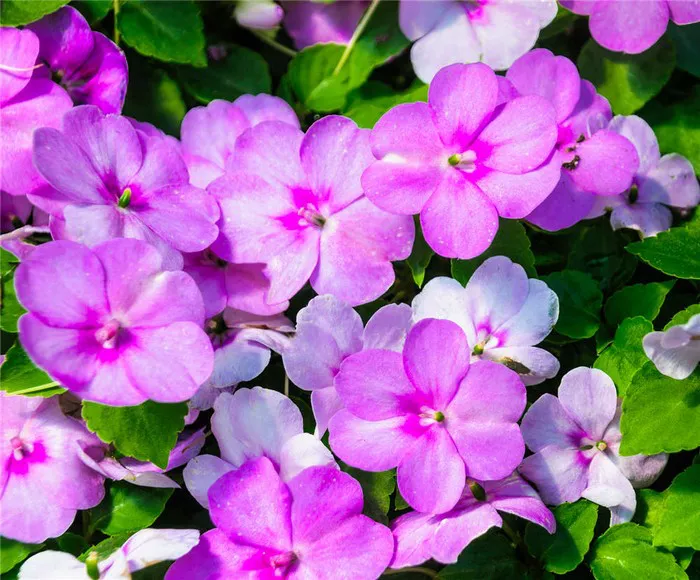Deer, known for their graceful presence and gentle demeanor, are fascinating creatures to observe in the wild. However, for gardeners and landscapers, they can pose a significant challenge as they often feed on plants, including flowers. Understanding what flowers deer are likely to eat can help mitigate damage to gardens and landscapes, allowing for a harmonious coexistence between humans and wildlife.
Deer Foraging Behavior
Before delving into the specific types of flowers deer prefer, it’s essential to understand their foraging behavior. Deer are herbivores, meaning they primarily feed on plant matter. Their diet typically consists of leaves, stems, buds, shoots, fruits, and flowers. Deer are selective feeders, often preferring certain plant species over others based on factors such as taste, nutritional value, and accessibility.
Deer are opportunistic feeders, meaning they will consume a wide variety of plants depending on availability and seasonal changes. While they have their preferences, they can adapt their diet to the surrounding vegetation. In areas where natural food sources are scarce, deer may venture into gardens and landscapes in search of sustenance, making it crucial for gardeners to be aware of which flowers are susceptible to deer browsing.
Preferred Flowers
While deer will consume a variety of plant material, including grasses, shrubs, and trees, they have specific preferences when it comes to flowers. Some flowers are more appealing to deer due to their taste, scent, or nutrient content. Below are some examples of flowers commonly eaten by deer:
1. Daylilies (Hemerocallis spp.): Daylilies are prized for their vibrant blooms and low maintenance, making them popular choices in gardens. However, they are also a favorite snack for deer, who find their tender foliage and flowers irresistible.
2. Hostas (Hosta spp.): Hostas are shade-loving perennials valued for their lush foliage and ornamental appeal. Unfortunately, deer find hostas to be a delectable treat, often browsing on their leaves and flowers.
3. Tulips (Tulipa spp.): Tulips are spring-blooming bulbs cherished for their colorful flowers and early-season display. However, deer are known to feast on tulip foliage and flowers, making them susceptible to damage in deer-populated areas.
4. Roses (Rosa spp.): Roses are beloved for their beauty and fragrance, but they are not immune to deer browsing. Deer may nibble on rose foliage and flowers, particularly in regions where deer populations are high.
5. Impatiens (Impatiens spp.): Impatiens are popular annuals prized for their prolific blooms and ability to thrive in shade. Unfortunately, deer consider impatiens to be a tasty treat, often consuming their tender foliage and flowers.
6. Petunias (Petunia spp.): Petunias are versatile annuals known for their colorful flowers and long-lasting blooms. However, they are susceptible to deer browsing, especially in areas where deer populations are abundant.
7. Dayflowers (Commelina spp.): Dayflowers are named for their ephemeral blooms that last only a day. While they may seem delicate, deer are known to graze on dayflower foliage and flowers, making them vulnerable to browsing.
8. Lilies (Lilium spp.): Lilies are prized for their elegant blooms and sweet fragrance, but they are also a favorite food source for deer. Deer will often consume both the foliage and flowers of lilies, posing a challenge for gardeners.
9. Columbines (Aquilegia spp.): Columbines are charming perennials valued for their unique spurred flowers and delicate foliage. However, deer find columbines to be palatable and may feed on both the leaves and flowers.
10. Phlox (Phlox spp.): Phlox are versatile perennials appreciated for their profusion of colorful blooms and ability to attract pollinators. However, deer are known to browse on phlox foliage and flowers, particularly in areas where natural food sources are scarce.
Deer Deterrent Strategies
While deer can be persistent in their quest for food, there are several strategies gardeners can employ to deter them from munching on prized flowers. Here are some effective deer deterrents to consider:
1. Plant Deer-Resistant Species: Choose flowers and plants that are less appealing to deer. While no plant is entirely deer-proof, certain species have characteristics that make them less attractive to deer, such as strong scent, bitter taste, or toxicity.
2. Use Physical Barriers: Install fences or barriers around flower beds to prevent deer from accessing vulnerable plants. Fences should be at least 8 feet tall and made of materials that deer cannot easily jump over or push through.
3. Apply Repellents: Use commercial or homemade deer repellents to deter deer from feeding on flowers. Repellents can be sprayed directly on plants and often contain ingredients that make the plants taste or smell unappealing to deer.
4. Employ Scare Tactics: Use scare tactics such as motion-activated sprinklers, noise-making devices, or visual deterrents like scarecrows to frighten deer away from flower beds.
5. Create Distractions: Plant deer-attractive species away from prized flowers to draw deer away from vulnerable plants. Consider planting sacrificial crops or flowers that deer prefer in a separate area of the garden to divert their attention.
6. Maintain a Tidy Garden: Remove fallen fruit, trim overgrown vegetation, and keep garden beds tidy to reduce hiding spots and minimize deer habitat near flower beds.
7. Alternate Food Sources: Provide alternative food sources for deer, such as deer-resistant plants or supplemental feeding stations, to discourage them from foraging in flower beds.
Conclusion
Deer can pose a challenge for gardeners and landscapers, particularly when it comes to protecting prized flowers from browsing damage. By understanding deer foraging behavior and knowing which flowers deer are likely to eat, gardeners can take proactive measures to mitigate damage and create deer-resistant landscapes. Employing a combination of deterrent strategies, such as planting deer-resistant species, using physical barriers, applying repellents, and employing scare tactics, can help preserve the beauty of flower beds while promoting coexistence with deer in natural habitats. With careful planning and implementation, gardeners can enjoy the beauty of flowers without falling prey to deer browsing.


